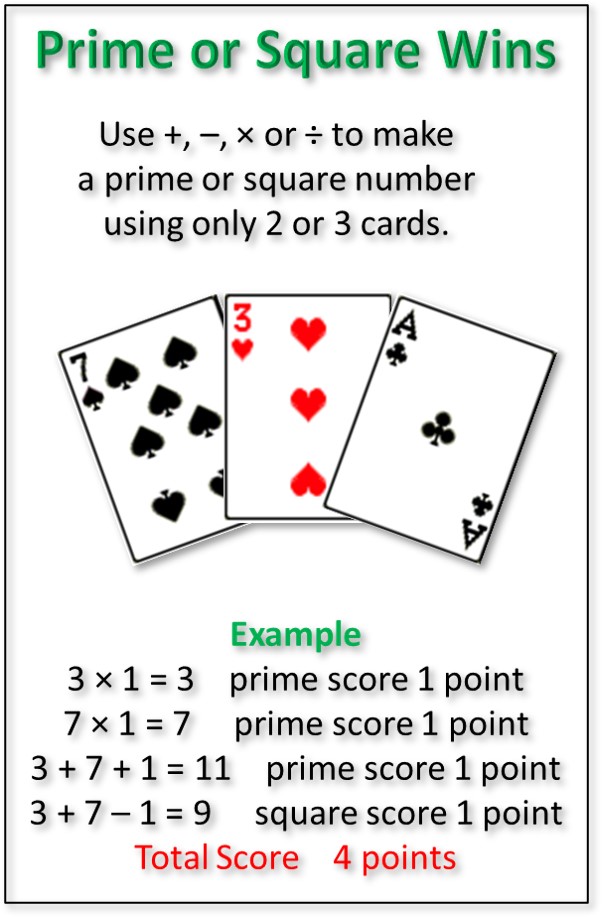Prime or Square
We are currently working on a new mental routines product for Year 6, matched to the content descriptors in the Australian Curriculum: Mathematics. The very first Year 6 content descriptor (ACMNA 122) is:
Identify and describe properties of prime, composite, square and triangular numbers.
As we were writing the mental routine for this content descriptor, we had an idea for the following game.

Resources
- a pack of cards, picture cards removed,
- a calculator (optional),
- a list of square and prime numbers (optional),
- a timer (optional).
Rules
Each player is dealt 3 cards.
Players manipulate their cards to create number sentences with the intent of creating square or prime answers. Each square or prime answer scores 1 point.
Failure to create a square or a prime results in a zero score for that round.
The player with the highest score at the end of 5 rounds is the winner.
Differentiation
- Use only 2 cards not 3 each hand.
- Use cards Ace to 5 only to reduce the range of multiplication and division facts and answers required.
- Include triangular numbers if appropriate.
- Allow use of calculators for working out answers or for checking answers.
- Provide a list of square numbers and prime numbers for those who need them.
- Introduce a time limit for finding answers for those who need more challenge.
- Increase the number of cards to 4 or 5 and score an extra point every time a division is involved. It’s a fact; most students and adults will avoid division if they can.
- Encourage some students to apply rules for divisibility and the Sieve of Eratosthenes to find the prime numbers.
Okay, back to work – writing Mental Routines for Year 6 … which is coming soon!

